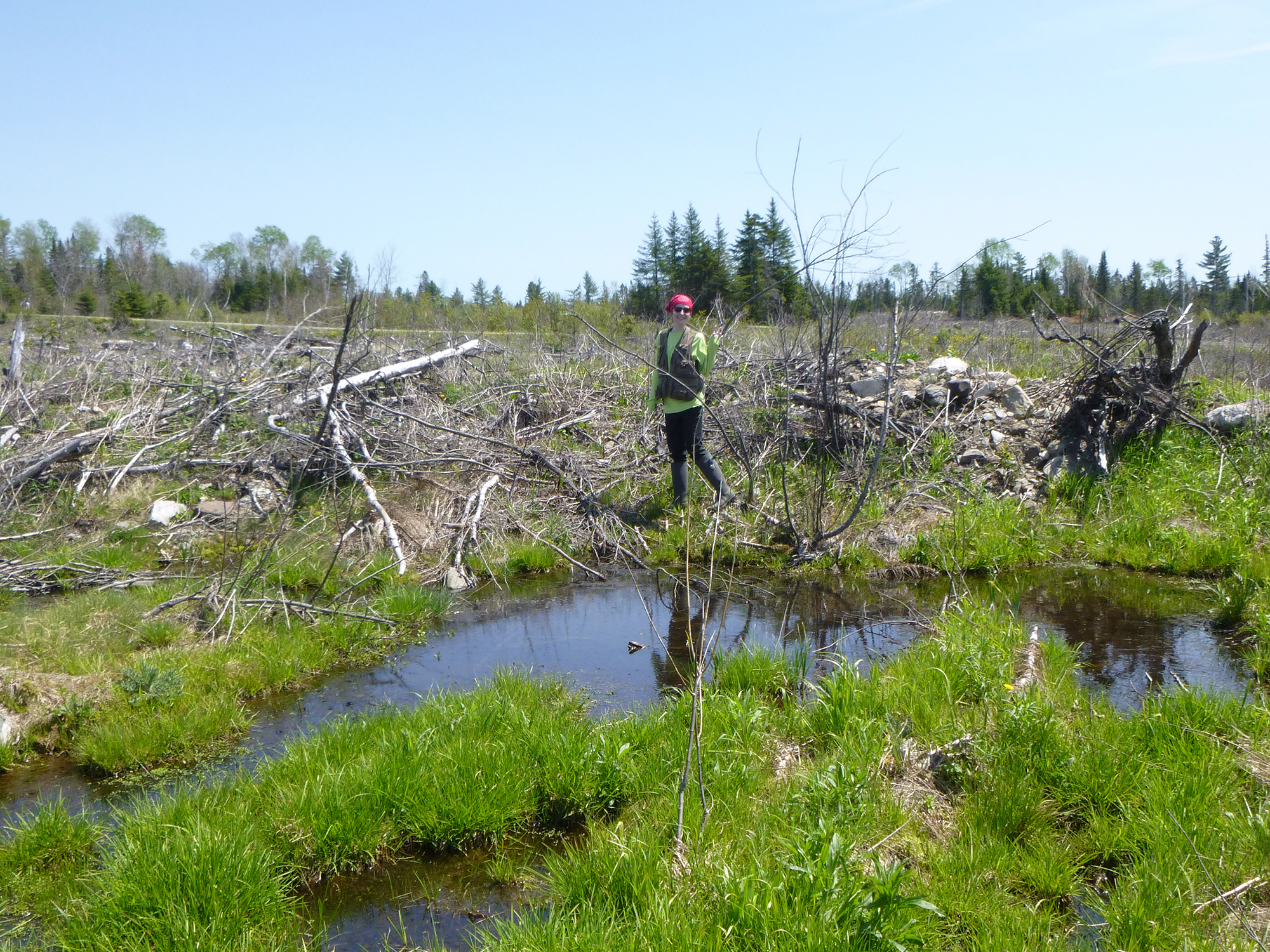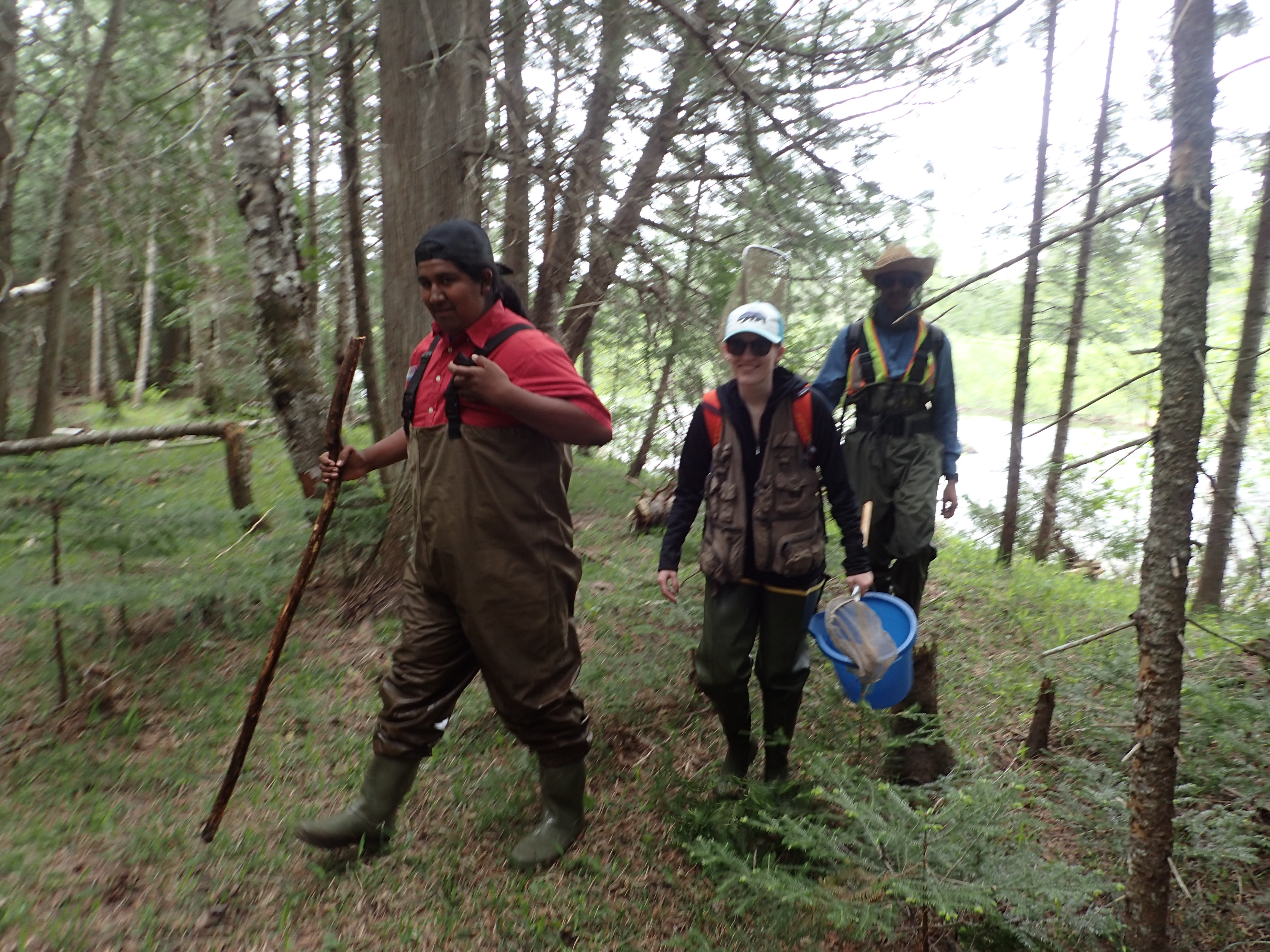
Aidan O’Brien searching a clearcut for Mink Frog
Scott Lindemann, Master of Wildlife Conservation Student, University of Maine
This summer will bring with it an exciting new project from the Hunter/Calhoun lab—we’ll be working once again on the Maine Amphibian and Reptile Atlas Project, in coordination with the Maine Department of Inland Fisheries and Wildlife.
This project began in 1986, when the Maine Department of Inland Fisheries and Wildlife, in cooperation with Maine Audubon, the Maine Natural Heritage Program, the Nature Conservancy, and the University of Maine, organized over 250 volunteers from around the state to participate in a four-year survey of Maine’s native reptile and amphibians. These volunteers yielded approximately 1,200 records of observations of amphibians and reptiles between 1986 and 1990, and as of 2016 we now have over 9,000 observation records in the database.
This summer I will be leading teams of up to 8 volunteers at a time to conduct field work across Maine. We’ll be searching for four species in particular (Gray Treefrog, Pickerel Frog, Common Watersnake, and Snapping Turtle) and also investigating one under-sampled geographic area, the North Maine Woods. We chose these species because there are still parts of their ecology that we do not understand. For example, we believe that there is “range gap” for Common Watersnake—it can be found near Calais in Eastern Maine, but then is not encountered in the Downeast Region again until reaching the mouth of the Penobscot River, farther west. Similarly, Gray Treefrog may be expanding its range farther north, into northern Aroostook County, as Maine’s climate has warmed in recent decades.

Wambli Cochise Martinez, Aidan O’Brien, and Scott Lindemann on the hunt for Wood Turtle
So far we have completed one week of surveying for Pickerel Frog, and are still compiling our first week of data. I led a team of three volunteers in daytime visual encounter surveys around wetlands, evening listening surveys, and rainy evening road walking surveys, and we also deployed “froglogger” automated acoustic recording devices to listen for frogs so we could “be” in multiple places at once. Last week’s work saw us camping out in the North Maine Woods by night and surveying in southern Aroostook and northern Penobscot counties during the day. Luckily, a campfire and a Dutch oven kept our stomachs full at night and the bugs away.
We’re all looking forward to the rest of the summer, and to looking for these amazing creatures in the incredible Maine landscape.
